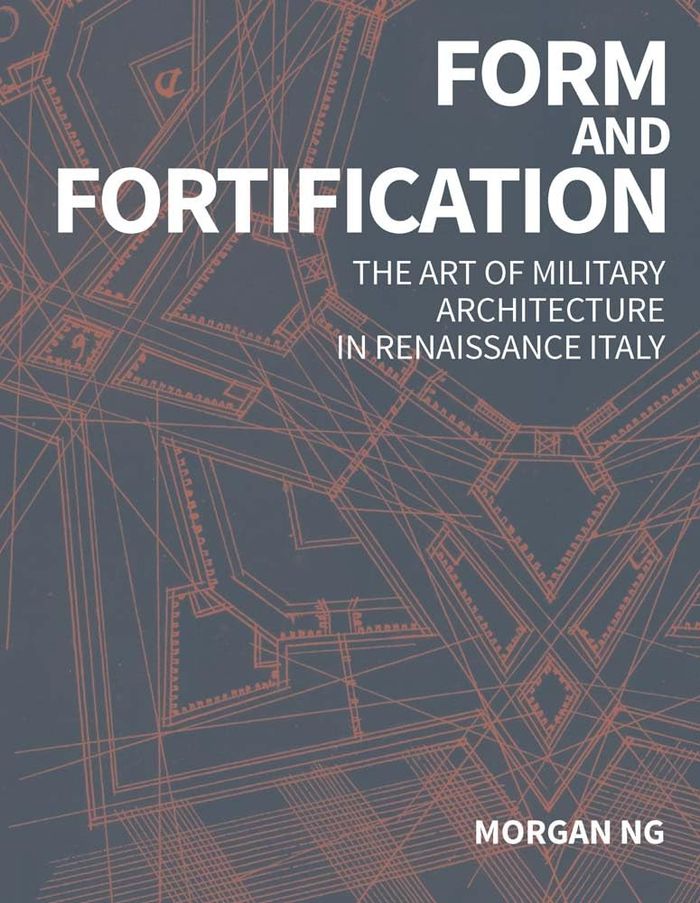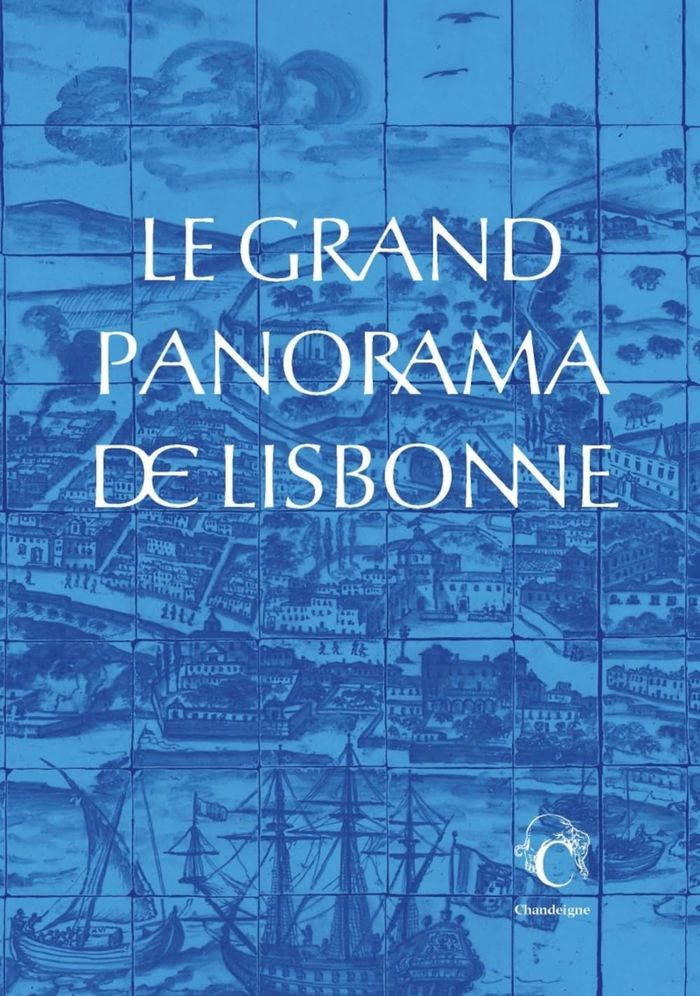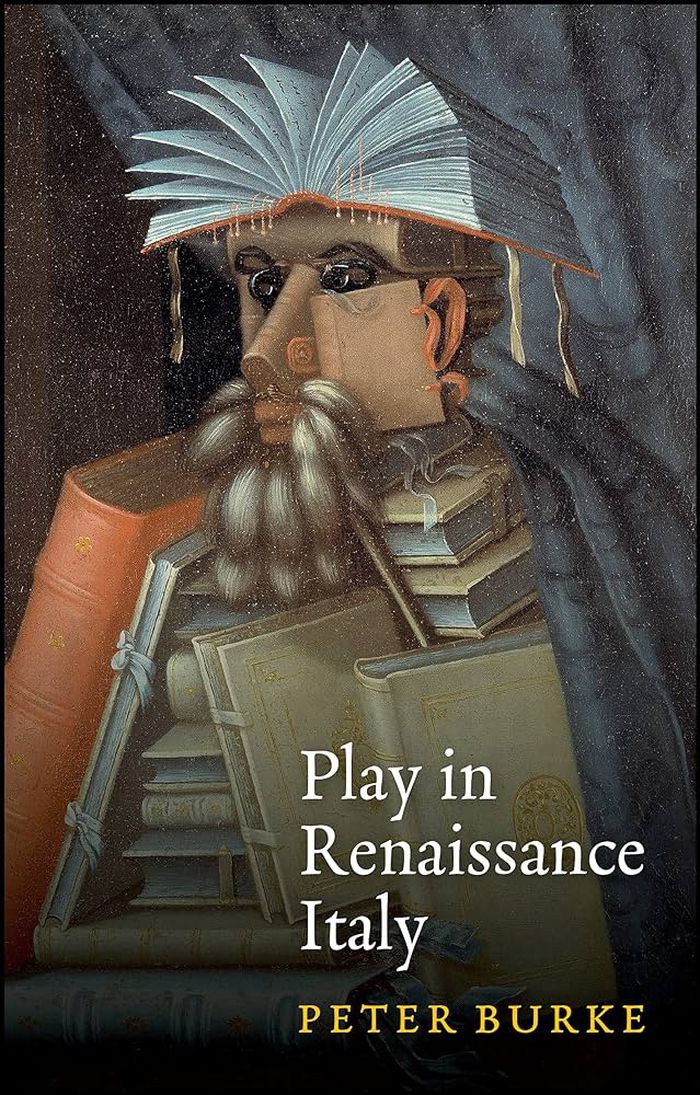$110.00
(disponible en magasin)
Résumé:
Urban fortifications were the most colossal artistic achievements of the Italian Renaissance. Celebrated sculptors, painters, and architects such as Michelangelo, Bramante, Leonardo, Francesco Paciotto, and Antonio da Sangallo the Younger collaborated with humanists and military commanders to design citadels and ramparts. Unprecedented in their geometric sophistication,(...)
Form and fortification: the art of military architecture in Renaissance Italy
Actions:
Prix:
$110.00
(disponible en magasin)
Résumé:
Urban fortifications were the most colossal artistic achievements of the Italian Renaissance. Celebrated sculptors, painters, and architects such as Michelangelo, Bramante, Leonardo, Francesco Paciotto, and Antonio da Sangallo the Younger collaborated with humanists and military commanders to design citadels and ramparts. Unprecedented in their geometric sophistication, constructional ambition, and physical grandeur, these monuments profoundly transformed the shape and experience of the built environment. "Form and fortification" challenges the long-held assumption that military architecture was merely an instrument of warfare, restoring the practice to its central place at the nexus of sixteenth-century creative and cultural endeavors. Through a rich array of drawings, archival manuscripts, early printed sources, treatises, and realized works, this book traces the remarkable exchanges between fortification and other arenas of art, design, and engineering.
$38.95
(disponible sur commande)
Résumé:
Le Grand panorama de Lisbonne, œuvre extraordinaire, l’une des plus importantes de la collection du musée national de l’Azulejo, est un document d’une richesse iconographique unique pour l’histoire de la ville de Lisbonne. Elle présente la vue la plus complète de la capitale, se déployant le long du Tage, avant le tremblement de terre qui la détruisit en 1755. La(...)
octobre 2024
Le grand panorama de Lisbonne
Actions:
Prix:
$38.95
(disponible sur commande)
Résumé:
Le Grand panorama de Lisbonne, œuvre extraordinaire, l’une des plus importantes de la collection du musée national de l’Azulejo, est un document d’une richesse iconographique unique pour l’histoire de la ville de Lisbonne. Elle présente la vue la plus complète de la capitale, se déployant le long du Tage, avant le tremblement de terre qui la détruisit en 1755. La contemplation de cette œuvre permet d’admirer des bâtiments et des lieux qui ont résisté à la catastrophe, mais aussi d’en observer d’autres ayant disparu, images d’un monde dont la fragilité nous est rappelée. Cette œuvre a été attribuée à l’un des premiers maîtres de la céramique baroque, le peintre d’origine espagnole Gabriel del Barco. Le panneau, d’environ 23 mètres de long, représentant 14 km de côtes d’Algés à Xabregas, nous invite à découvrir – au-delà des palais, églises, couvents et habitations – l’atmosphère générale de la ville lisboète en ce début de xviiie siècle, des zones les plus densément peuplées jusqu’aux campagnes et environs d’Alcântara ou Belém.
Play in Renaissance Italy
$27.95
(disponible en magasin)
Résumé:
From comic verse to practical jokes, pornography to satire, acting to acrobatics, the Renaissance witnessed the flowering of play in all its forms. In the first wide-ranging and accessible introduction to play in Renaissance Italy, Peter Burke, celebrated historian of the Italian Renaissance, synthesizes over forty years’ research, explores the various forms of play in(...)
Play in Renaissance Italy
Actions:
Prix:
$27.95
(disponible en magasin)
Résumé:
From comic verse to practical jokes, pornography to satire, acting to acrobatics, the Renaissance witnessed the flowering of play in all its forms. In the first wide-ranging and accessible introduction to play in Renaissance Italy, Peter Burke, celebrated historian of the Italian Renaissance, synthesizes over forty years’ research, explores the various forms of play in this period, and offers an overview that reveals the many connections between its different domains. While play could be rough, the Church played an increasing role in determining acceptable and unacceptable forms of play, and, after campaigns against violence and obscenity, much of the licentiousness characteristic of the early Renaissance was tamed.
livres
Baroques
$120.00
(disponible sur commande)
Résumé:
De Rome à Würzburg et de l’Andalousie à l’Amérique latine, l’art baroque est le premier phénomène artistique d’ampleur mondiale. Véhicule des idées de l’église catholique, il a su inventer des formes nouvelles, tout en s’adaptant à des conditions historiques, politiques et géographiques très différentes. Longtemps considéré comme un art de décadence, le baroque apparaît(...)
avril 2009, Paris
Baroques
Actions:
Prix:
$120.00
(disponible sur commande)
Résumé:
De Rome à Würzburg et de l’Andalousie à l’Amérique latine, l’art baroque est le premier phénomène artistique d’ampleur mondiale. Véhicule des idées de l’église catholique, il a su inventer des formes nouvelles, tout en s’adaptant à des conditions historiques, politiques et géographiques très différentes. Longtemps considéré comme un art de décadence, le baroque apparaît aujourd’hui comme la manifestation d’une civilisation qui a considérablement élargi l’horizon du réel. La culture de l’âge baroque est à l’origine de la nôtre : c’est la première véritable “civilisation de l’image”. Construit autour des photographies réalisées ces vingt dernières années par Ferrante Ferranti, Baroques présente tous les aspects du baroque mondial dans un parcours qui donne au lecteur une idée de l’infini d’un style artistique grandiose.
livres
avril 2009, Paris
livres
Paper Palaces
$80.00
(disponible sur commande)
Résumé:
This book explores how architectural treatises by such authors as Alberti, Di Giorgio, Colonna, Serlio, Palladio, and others have affected the development of the art of building. The contributors, Joseph Rykwert, Alberto Perez-Gomez, Nigel Llewellyn, Indra Kagis McEwen, Ingrid and James McQuillan among others offer new insights into the ideas of the treatises and discuss(...)
octobre 1998, New Haven
Paper Palaces
Actions:
Prix:
$80.00
(disponible sur commande)
Résumé:
This book explores how architectural treatises by such authors as Alberti, Di Giorgio, Colonna, Serlio, Palladio, and others have affected the development of the art of building. The contributors, Joseph Rykwert, Alberto Perez-Gomez, Nigel Llewellyn, Indra Kagis McEwen, Ingrid and James McQuillan among others offer new insights into the ideas of the treatises and discuss their significance in Renaissance Italy, as well as their long-lasting influence throughout Europe.
livres
octobre 1998, New Haven
$60.00
(disponible sur commande)
Résumé:
Comment créer des formes nouvelles dans un système a priori clos par des règles de morphologie et de syntaxe clairement définies ? Le système des ordres d’architecture classiques ne laisse apparemment aucune place à l’innovation formelle. Mais si les trois ordres grecs, dorique, ionique et corinthien, fournissent à la Renaissance le pivot naturel de la grammaire et le(...)
Aux marges de la règle : essai sur les ordres d'architecture à la Renaissance
Actions:
Prix:
$60.00
(disponible sur commande)
Résumé:
Comment créer des formes nouvelles dans un système a priori clos par des règles de morphologie et de syntaxe clairement définies ? Le système des ordres d’architecture classiques ne laisse apparemment aucune place à l’innovation formelle. Mais si les trois ordres grecs, dorique, ionique et corinthien, fournissent à la Renaissance le pivot naturel de la grammaire et le fondement de la rhétorique, des formes périphériques apparaissent aux marges : toscan, attique, italique ou latin sont autant d’inventions qui, bien qu’elles échappent à la perfection de l’idée de l’architecture, acquièrent une valeur esthétique. Mineures, hybrides, monstrueuses parfois, elles suscitent l’intérêt des plus inventifs des architectes, Michel-Ange ou Philibert De l’Orme, dont elles stimulent l’imagination.
Inside the Renaissance house
$34.95
(disponible sur commande)
Résumé:
The Renaissance home was an outward symbol of a family’s status, wealth and erudition, and much care went into its arrangement and furnishing, and the art of household management. 'Inside the Renaissance house' vividly conveys through contemporary illustrations and lively writing the realities of living in Florence and Venice during this innovative era and takes the(...)
Inside the Renaissance house
Actions:
Prix:
$34.95
(disponible sur commande)
Résumé:
The Renaissance home was an outward symbol of a family’s status, wealth and erudition, and much care went into its arrangement and furnishing, and the art of household management. 'Inside the Renaissance house' vividly conveys through contemporary illustrations and lively writing the realities of living in Florence and Venice during this innovative era and takes the reader on a room-by-room tour. From the sala, devoted to games, music and entertaining in style, to the bedchamber, which was far from the private space it is today, to the study, full of objects, Elizabeth Currie evokes the life that went on in each room.
livres
$28.50
(disponible en magasin)
Résumé:
De la Renaissance à la dernière actualité, ce recueil est une contribution à l'histoire des relations entre architectes et commanditaires. Figures déterminantes de la commande architecturale, elles sont ici évoquées par neuf historiens, tant américain, français, italien, russe que suisse, abordant une vingtaine d'exemples issue d'horizons variés. De grands commanditaires(...)
Architectes et commanditaires : cas particuliers du XVIe au XXe siècle
Actions:
Prix:
$28.50
(disponible en magasin)
Résumé:
De la Renaissance à la dernière actualité, ce recueil est une contribution à l'histoire des relations entre architectes et commanditaires. Figures déterminantes de la commande architecturale, elles sont ici évoquées par neuf historiens, tant américain, français, italien, russe que suisse, abordant une vingtaine d'exemples issue d'horizons variés. De grands commanditaires réapparaissent, tels l'impératrice Catherine la Grande, le philanthrope Andrew Carnegie ou la famille Rothschild. D'autres, moins connus, sont à découvrir : le cardinal d'Amboise, l'ordre ecclésiastique de la Visitation, le cas singulier de puissants genevois, le Prince Napoléon, ou les usines Renault... Les architectes trouvent également la place qui leur est due avec des artistes aussi importants que François Mansart, Charles Cameron, Emile Trélat ou Mies van der Rohe.
livres
avril 2009, Paris
$95.95
(disponible sur commande)
Résumé:
Giuliano da Sangallo was one of the first architects to draw the ruins and artifacts of ancient Rome in a systematic way. Cammy Brothers shows how Giuliano played a crucial role in the Renaissance recovery of antiquity, and how his work transformed the broken fragments of Rome’s past into the image of a city made whole. The book demonstrates how his drawings form the(...)
Giuliano da Sangallo and the Ruins of Rome
Actions:
Prix:
$95.95
(disponible sur commande)
Résumé:
Giuliano da Sangallo was one of the first architects to draw the ruins and artifacts of ancient Rome in a systematic way. Cammy Brothers shows how Giuliano played a crucial role in the Renaissance recovery of antiquity, and how his work transformed the broken fragments of Rome’s past into the image of a city made whole. The book demonstrates how his drawings form the basis for a reevaluation of the meaning and method of the Renaissance study of ancient artifacts, and brings to life the transformative moment when artists and architects began to view the fragments of ancient Rome not as broken artifacts of little interest but as objects of aesthetic contemplation.
$44.95
(disponible sur commande)
Résumé:
Comme l'illustrent "L'École d'Athènes" de Raphaël ou "L'Apothéose d'Homère" d'Ingres, la Renaissance marque l'avènement de l'artiste, qui revendique désormais un statut intellectuel et social comparable à celui des philosophes-poètes. Mais le travail manuel reste au cœur de son activité : matériaux et pratiques artistiques sont engagés dans l'œuvre au même titre que la(...)
L'architecture parmi les arts ; matérialité, transferts et travail artistique dans l'Italie de la Renaissance
Actions:
Prix:
$44.95
(disponible sur commande)
Résumé:
Comme l'illustrent "L'École d'Athènes" de Raphaël ou "L'Apothéose d'Homère" d'Ingres, la Renaissance marque l'avènement de l'artiste, qui revendique désormais un statut intellectuel et social comparable à celui des philosophes-poètes. Mais le travail manuel reste au cœur de son activité : matériaux et pratiques artistiques sont engagés dans l'œuvre au même titre que la vision poétique. L'idée artistique elle-même ne naîtrait-elle donc pas aussi du maniement physique des outils et des matériaux ? Et l'architecture, semblant confinée dans une pensée isolée de la fabrication matérielle, pourrait-elle s'intégrer dans cette perspective progressivement admise pour les autres arts ? Les questionnements qui traversent ce livre invitent à une réflexion sur le rôle de la matière, des instruments et des gestes dans le travail artistique, mais aussi sur le dialogue qu'entretiennent les arts entre eux, favorisé par l'utilisation de matériaux communs, à travers une étude de quelques œuvres majeures de l'architecture de la Renaissance italienne.






